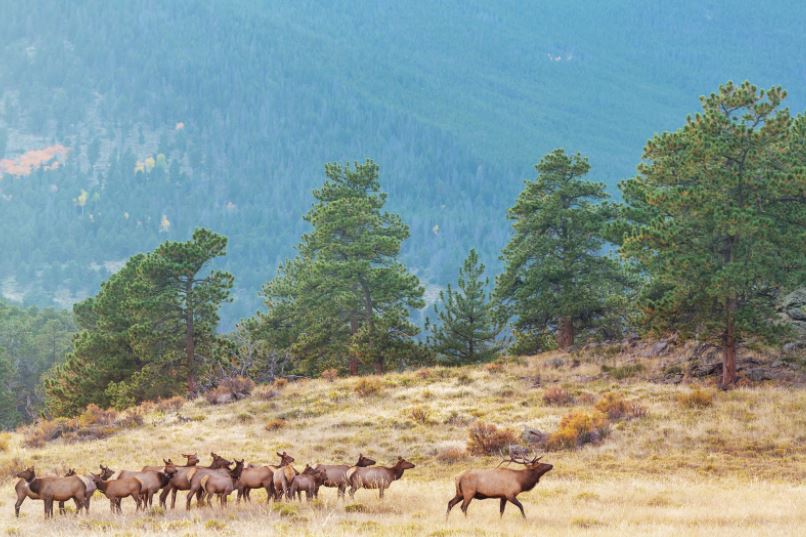SK Court of Appeal Hears Métis Right to Harvest Case

For the first time, the Saskatchewan Court of Appeal considered the extent to which the Métis can claim a right to hunt and fish for food under Section 35(1) of the Constitution Act, 1982.
The Court confirmed that the Métis have the right to assert a defence that their S. 35 rights exist throughout significant parts of Western Canada. The case of R v Boyer, 2022 SKCA 62 was decided on May 31, 2022 and the appeal was ultimately allowed because the lower court failed to permit the Métis Defendants to advance this theory of rights and therefore make full answer and defence to the charges.
R v Boyer, 2022 SKCA 62 Case Background
Three Métis individuals (Billy Myette, Warren Boyer and Oliver Poitras “Appellants”) were charged with unlawfully hunting or fishing for food. They were harvesting in an area located relatively near the historic Métis community of Northwest Saskatchewan (the “Métis Community.”) The three individuals, who were jointly-tried, provided notices of constitutional question upon the Crown. These notices stated that they held an Aboriginal right to hunt and fish for food, protected by Section 35(1). Importantly, they claimed that the Métis Community encompasses more land area that had been previously described in the case of R v Laviolette, 2005 SKPC. The Appellants also asserted that the Métis were a migratory people who hunted and fished in various areas when the European control was first exerted over the territory that is now Saskatchewan.
What the Lower Courts Had to Say
In an effort to prove that the Métis rights-bearing community of Northwest Saskatchewan extended south of Meadow Lake, the Appellants had to show that theirs was a migratory way of life, where settlements moved around to harvest the places in between. The trial judge favoured the Crown’s reliance on the Powley case, which concludes that Aboriginal rights can be claimed under Section 35 on a site-specific basis only. In particular, large geographical or province-wide basis for exercising rights could not be considered. Ultimately, Myette was acquitted due to the fact that he was found to be hunting within the boundaries of the Métis community. Both Boyer and Poitras were convicted because they hunted outside those boundaries.
Boyer and Poitras appealed to the Court of Queen’s Bench who dismissed their appeals. In turn, they appealed to the Court of Appeal based on the basis that the lower courts misinterpreted Powley as precluding a regional approach to rights.
Law and Analysis
The Court of Appeal revisited Powley and Blais and the cases determined subsequently. While Blais confirmed that the Métis could not assert province-wide harvesting rights pursuant to the terms of the Natural Resources Transfer Agreement, a proper interpretation of Powley cannot be taken to have excluded this possibility. Powley required that, in order to exercise S. 35 rights, Métis must prove membership in both a historic (i.e. pre-effective control) and modern Métis community. Previously, this has been interpreted as being a very small area, i.e. Sault Ste. Marie and environs (r. v. Powley), the Qu’Appelle Valley and environs (r. v. Belhumeur) or North West Saskatchewan (r v. Laviolette).
The court concluded that the Powley case does not put forward a narrow test, frozen in time and that the section 35 rights of nomadic Indigenous Groups may develop differently than those who claim site-specific rights. By failing to consider the difference between site-specific rights and the nature of nomadic rights, the Court of Appeal found that the lower court judges erred when convicting the Appellants. In particular, the summary conviction appeal judge erred by not considering all of the Appellant’s evidence relating to whether the mobility of the Métis could ground a right to harvest in the relevant land area, including the extra-territoriality of those rights beyond provincial borders. Thus, the Appellants were denied the right to make full answer in defence.
Key Takeaways Regarding the Métis Right to Harvest in Saskatchewan
Importantly, the Court left the question whether the Métis have a right to harvest in the north, central, and southern parts of the province or the whole of it for another day. Ultimately, the Court ordered a new trial. If the Crown re-tries the Métis claimants, the lower court will need to fully consider and weigh the evidence that the Métis were a community made of many settlements connected through culture, commerce, and kinship throughout Saskatchewan and beyond and whether that community can be characterized as a rights bearing community under Powley.
The Court of Appeal again reminded the parties that a criminal summary conviction charge was perhaps not the best forum for determining these important questions. Until an agreement is reached with the Province, or a reference case determines these important questions in a wider context, Métis rights will continue to be incrementally defined by the Courts.
Note: This article is of a general nature only and is not exhaustive of all possible legal rights or remedies. In addition, laws may change over time and should be interpreted only in the context of particular circumstances such that these materials are not intended to be relied upon or taken as legal advice or opinion. Readers should consult a legal professional for specific advice in any particular situation.





